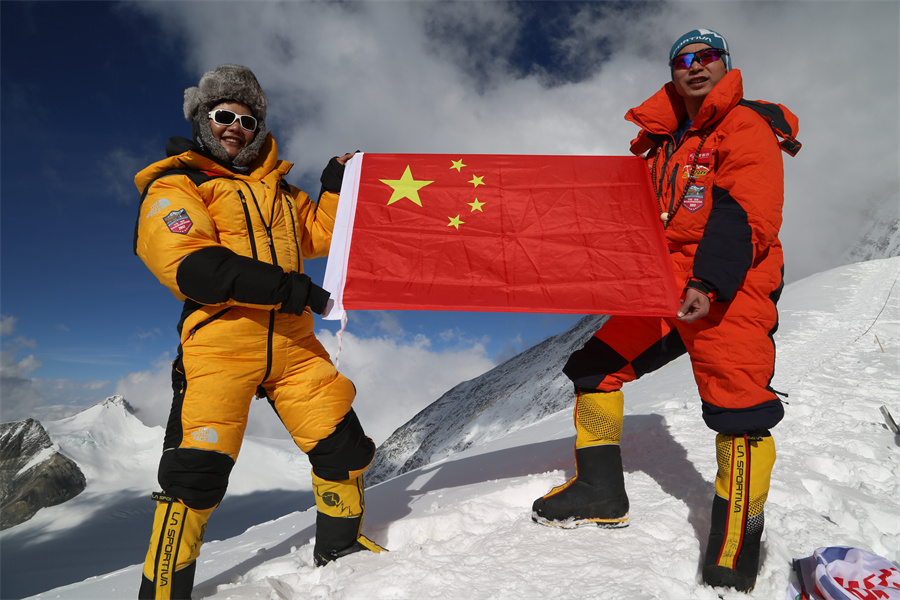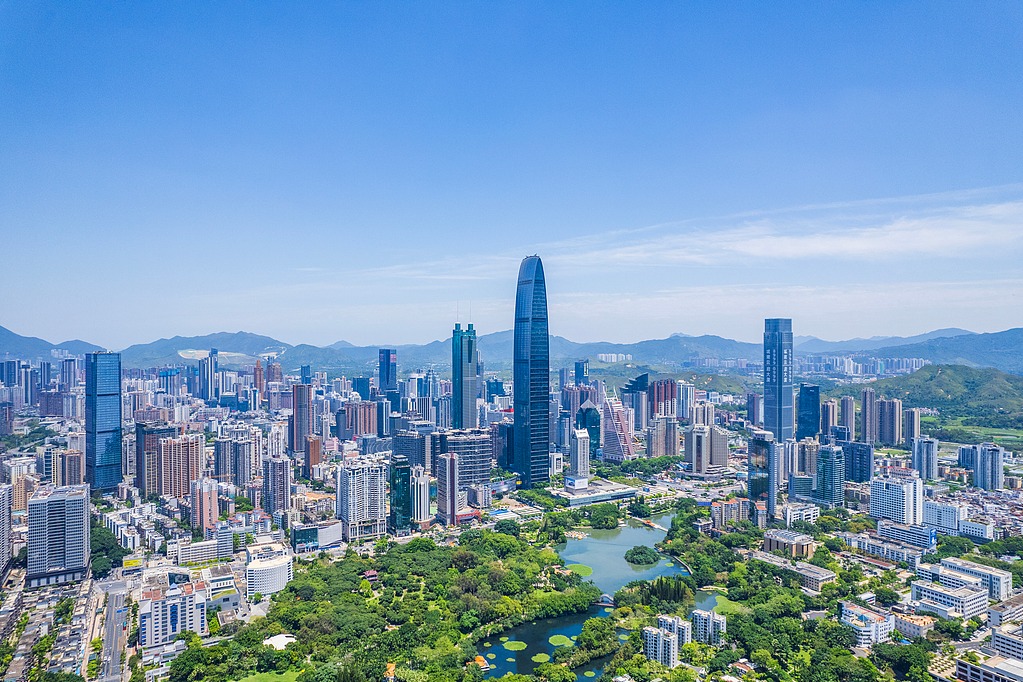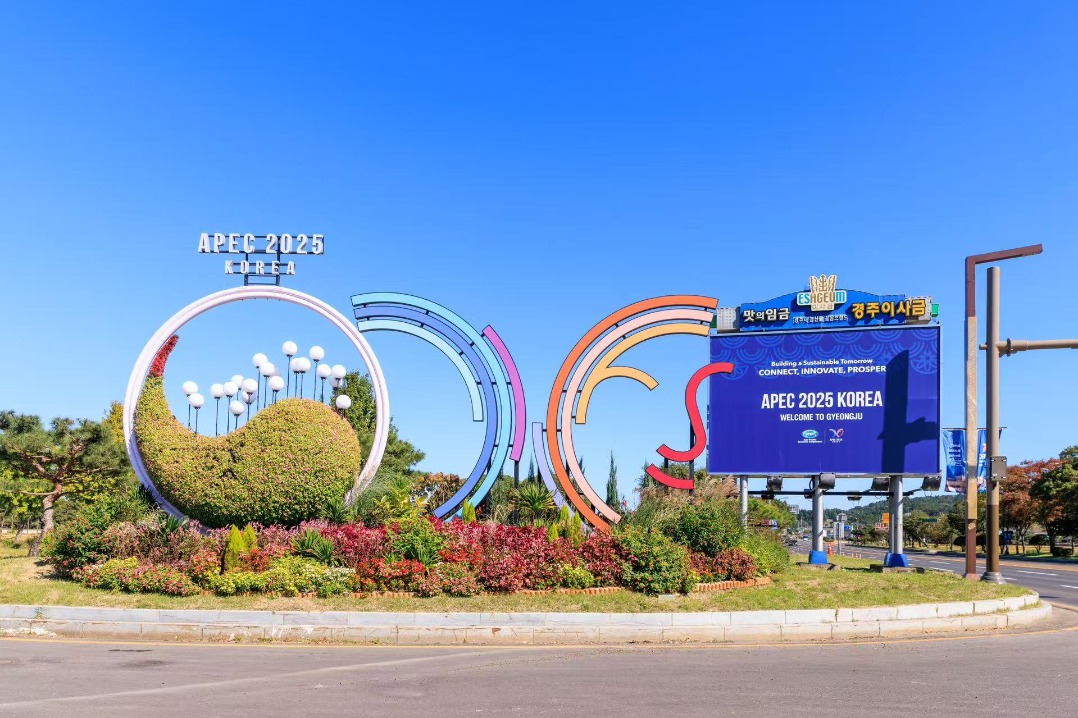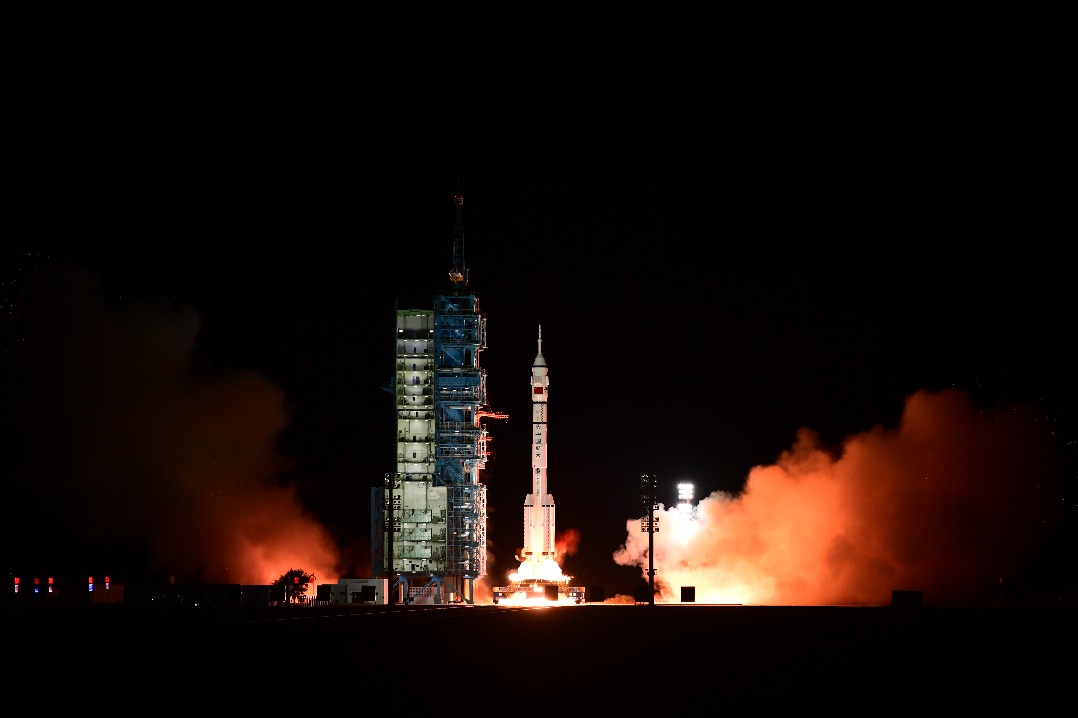Alpinist breaks gender stereotype on Roof of the World
Guizhou mountaineer leads fellow female climbers up Qomolangma, world's highest peak


Huang said that although there may be a certain disparity in physical strength between women and men, she believes that many essential characteristics of mountaineering give women an advantage in the sport.
Climbing Qomolangma is more like a marathon than a sprint. It tests endurance and patience. It requires breaking down grand goals into practical steps, maintaining patience, progressing steadily, turning adversity into positivity and staying focused on the ultimate objective until it is reached, said Huang.
Unlike long-distance running, high-altitude climbing involves life-threatening risks. It requires strong willpower and a calm mind for critical decisions. Ed Viesturs, one of the most outstanding high-altitude mountaineers in the United States, once turned back when getting very close to the Qomolangma summit due to a danger that intuition and experience warned him about, as reported by Shanghai Observer.
Huang noted that women climbers she knew were usually calm, patient and humble, with relatively less desire to conquer or compete, yet deeply powerful. With their great inner strength, they steadily progress toward their goals.
"I was built to be a mountain, not a creek; rising to the high peaks with the small valleys at my feet", reads part of an inspirational slogan at Huaping Girls High School in Lijiang, Yunnan province, founded by educator Zhang Guimei, which powerfully echoes the convictions Huang has upheld throughout her life.
"Society's biases are the real mountains we must climb," Huang said, as her team prepared for their ascent. "But when you stand atop Qomolangma, you realize no barrier is insurmountable."
As dawn broke over the Himalayas, Huang gazed at the horizon — a woman once told that she'd never rise so high, now lifting others to new heights.
























